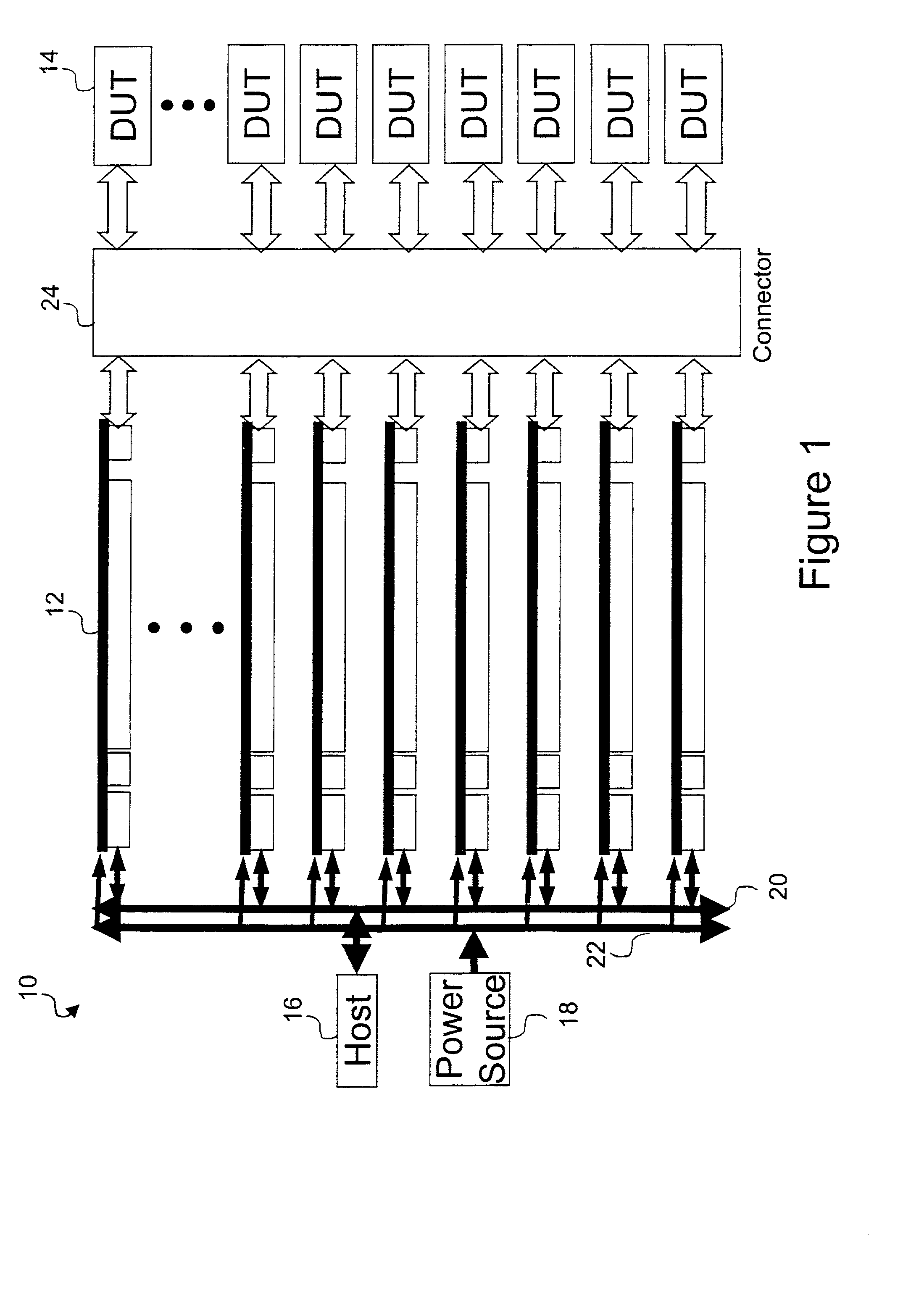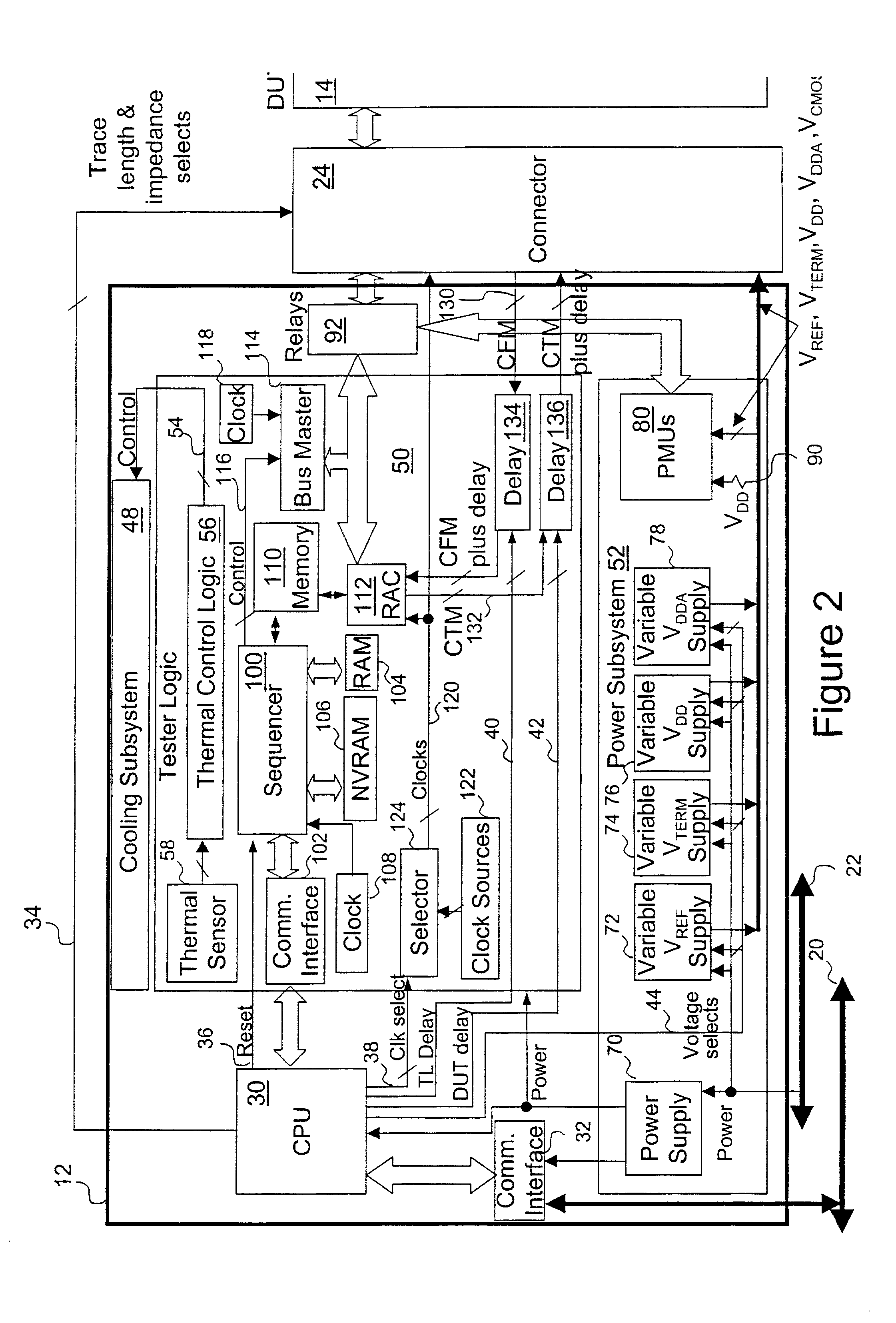Method and system for wafer and device-level testing of an integrated circuit
a technology of integrated circuits and test methods, applied in the direction of testing circuits, resistance/reactance/impedence, instruments, etc., can solve the problems of circuit card faults circuit card faults, etc., and achieve the effect of reducing the number of test equipmen
- Summary
- Abstract
- Description
- Claims
- Application Information
AI Technical Summary
Benefits of technology
Problems solved by technology
Method used
Image
Examples
first embodiment
[0099] Referring now to FIG. 11A, there is depicted a high-level block diagram of test fixture embodiment capable of testing a DUT 14 already manufactured onto a circuit board. DUT 14 is able to communicate with a logic tester 250 through connection to an unpopulated device site on the Rambus channel 270. FIG. 11B is a more detailed depiction of an unpopulated device site 270 on the Rambus channel having a plurality of pads, including pad 272. FIG. 11C shows a single finger of a controlled impedance probe 274, which interfaces with connector 24 of logic tester 250 by contacting pad 272. The controlled impedance probe 274 allows DUT 14 to communicate with logic tester 250 via unpopulated device site on the Rambus channel 270 as if DUT 14 was directly connected to the connector 24 of logic tester 250. The test fixture embodiment shown in FIGS. 11A-11C offers the ability to test many functions of system board 252 or peripheral board 264 after DUT 14 is manufactured onto the circuit boa...
second embodiment
[0115] Referring now to FIG. 20A, there is depicted a test fixture for testing DUTs 14 using communication over a DDR memory bus, where the DUTs are manufactured onto circuit boards. As can be seen by comparison of FIG. 20A with FIG. 12A, the two test fixture embodiments are somewhat similar. However, in order to support use of DDR communication in the embodiment of FIG. 19A, there are a number of differences from the RSL embodiment illustrated in FIG. 12A. These differences include replacement of unpopulated Rambus connector 276 with unpopulated DDR connector 298, which may be a socket for a DDR memory module. Fundamental changes to system board 294 and peripheral board 296 that are not essential for an understanding of the present invention make them distinctly different from system board 252 and peripheral board 264 of FIG. 12A. FIG. 20B depicts a more detailed view of the connection of a controlled impedance test fixture 304 within DDR connector 298 of FIG. 20A.
[0116] The presen...
PUM
 Login to View More
Login to View More Abstract
Description
Claims
Application Information
 Login to View More
Login to View More - R&D
- Intellectual Property
- Life Sciences
- Materials
- Tech Scout
- Unparalleled Data Quality
- Higher Quality Content
- 60% Fewer Hallucinations
Browse by: Latest US Patents, China's latest patents, Technical Efficacy Thesaurus, Application Domain, Technology Topic, Popular Technical Reports.
© 2025 PatSnap. All rights reserved.Legal|Privacy policy|Modern Slavery Act Transparency Statement|Sitemap|About US| Contact US: help@patsnap.com



